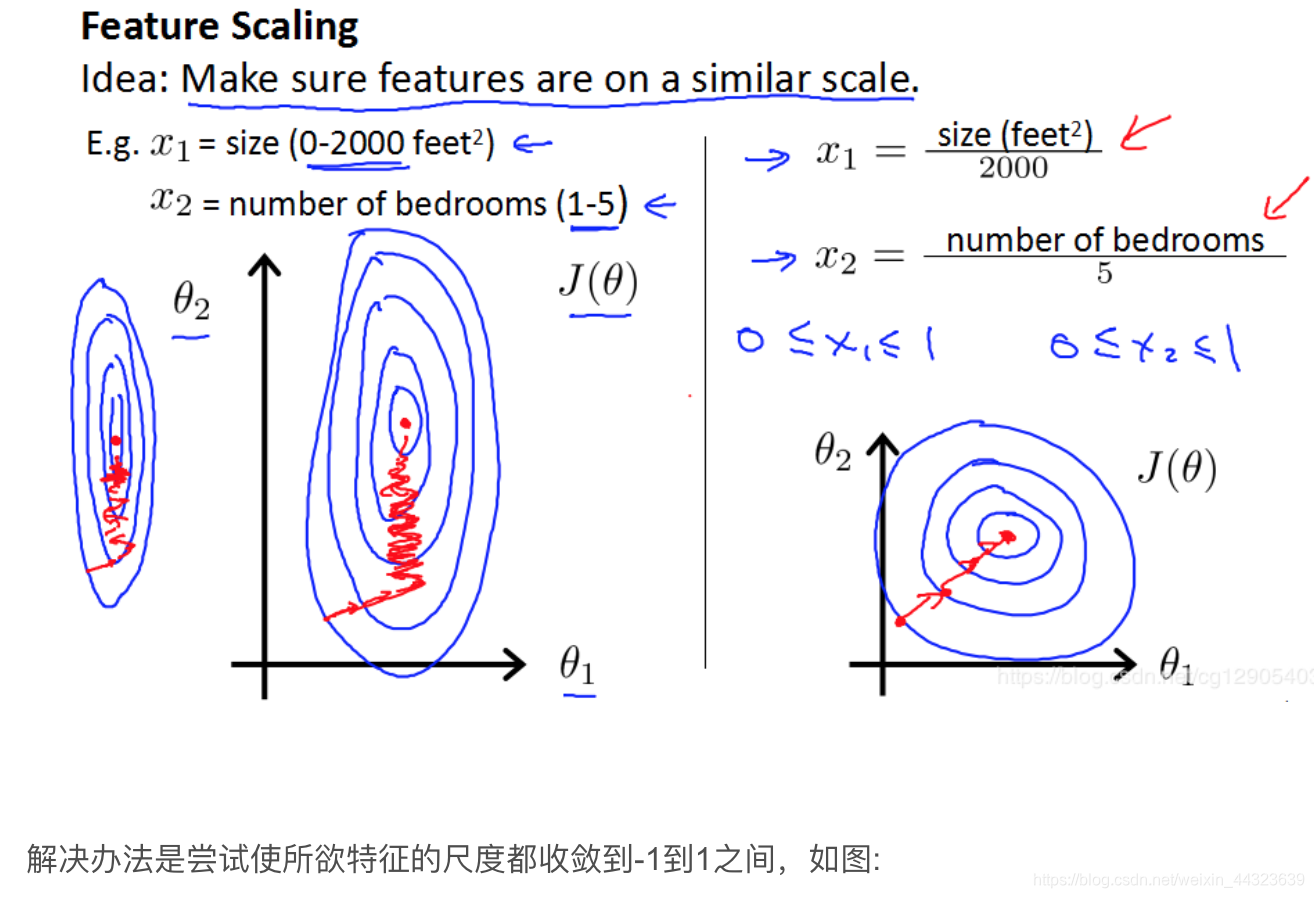回顾
逗号为连续调用,顿号为终止输出,hold/close保持/关闭图像
plot magic 及矩阵直接定义
表达式/函数直接执行并输出ans
1.layout格式
2.*appender绑定输出类型与目标
3.setPattern绑定格式
4.Category绑定记录
5.set priority
一.Andrew ML
1.ex1单元梯度下降已实现

function J = computeCost(X, y, theta)
%COMPUTECOST Compute cost for linear regression
% J = COMPUTECOST(X, y, theta) computes the cost of using theta as the
% parameter for linear regression to fit the data points in X and y
% Initialize some useful values
m = length(y); % number of training examples
% You need to return the following variables correctly
J = 0;
% ====================== YOUR CODE HERE ======================
% Instructions: Compute the cost of a particular choice of theta
% You should set J to the cost.
h = X*theta;
J = (h-y)'*(h-y)/(2*m);
% =========================================================================
end
J的这种表达式暂时不懂数学原理
2.ex1:(可选)多元回归
目前看来a:b代表由a到b的数据
theta=(X’*X)\X’*y;%为常规方程法
(1).feature scaling


function [X_norm, mu, sigma] = featureNormalize(X)
%FEATURENORMALIZE Normalizes the features in X
% FEATURENORMALIZE(X) returns a normalized version of X where
% the mean value of each feature is 0 and the standard deviation
% is 1. This is often a good preprocessing step to do when
% working with learning algorithms.
% You need to set these values correctly
X_norm = X;
mu = zeros(1, size(X, 2));% size(x,2)return colmns numbers of x
sigma = zeros(1, size(X, 2));
%mu与sigma均为行向量,列数为x列数,即xi的个数
% ====================== YOUR CODE HERE ======================
% Instructions: First, for each feature dimension, compute the mean
% of the feature and subtract it from the dataset,
% storing the mean value in mu. Next, compute the
% standard deviation of each feature and divide
% each feature by it's standard deviation, storing
% the standard deviation in sigma.
%
% Note that X is a matrix where each column is a
% feature and each row is an example. You need
% to perform the normalization separately for
% each feature.
%
% Hint: You might find the 'mean' and 'std' functions useful.
%
mu=mean(X);
sigma=std(X);
for i = 1:size(X,2)
X_norm(:,i) = (X(:,i) - mean(X(:,i)))/sigma(:,i);
end
% ============================================================
end
(2)梯度下降
alpha = 0.01;
num_iters = 400;
alpha2 = 0.03;
alpha3 = 0.003;
% Init Theta and Run Gradient Descent
theta = zeros(3, 1);
[theta, J_history] = gradientDescentMulti(X, y, theta, alpha, num_iters);
[theta2, J_history2] = gradientDescentMulti(X, y, theta, alpha2, num_iters);
[theta3, J_history3] = gradientDescentMulti(X, y, theta, alpha3, num_iters);
function [theta, J_history] = gradientDescentMulti(X, y, theta, alpha, num_iters)
%GRADIENTDESCENTMULTI Performs gradient descent to learn theta
% theta = GRADIENTDESCENTMULTI(x, y, theta, alpha, num_iters) updates theta by
% taking num_iters gradient steps with learning rate alpha
% Initialize some useful values
m = length(y); % number of training examples
J_history = zeros(num_iters, 1);
for iter = 1:num_iters
% ====================== YOUR CODE HERE ======================
% Instructions: Perform a single gradient step on the parameter vector
% theta.
%
% Hint: While debugging, it can be useful to print out the values
% of the cost function (computeCostMulti) and gradient here.
%
theta = theta - alpha/m*X'*(X*theta-y);
% ============================================================
% Save the cost J in every iteration
J_history(iter) = computeCostMulti(X, y, theta);
end
end
(3)常规方程
function [theta] = normalEqn(X, y)
%NORMALEQN Computes the closed-form solution to linear regression
% NORMALEQN(X,y) computes the closed-form solution to linear
% regression using the normal equations.
theta = zeros(size(X, 2), 1);
% ====================== YOUR CODE HERE ======================
% Instructions: Complete the code to compute the closed form solution
% to linear regression and put the result in theta.
%
% ---------------------- Sample Solution ----------------------
theta=(X'*X)\X'*y;
% -------------------------------------------------------------
% ============================================================
end
中途问题
我的结果
正确结果
需要修改computeCostMulti,每次循环更新J值
ex1完成,用时2天
来源:CSDN
作者:安思言
链接:https://blog.csdn.net/weixin_44323639/article/details/103885060